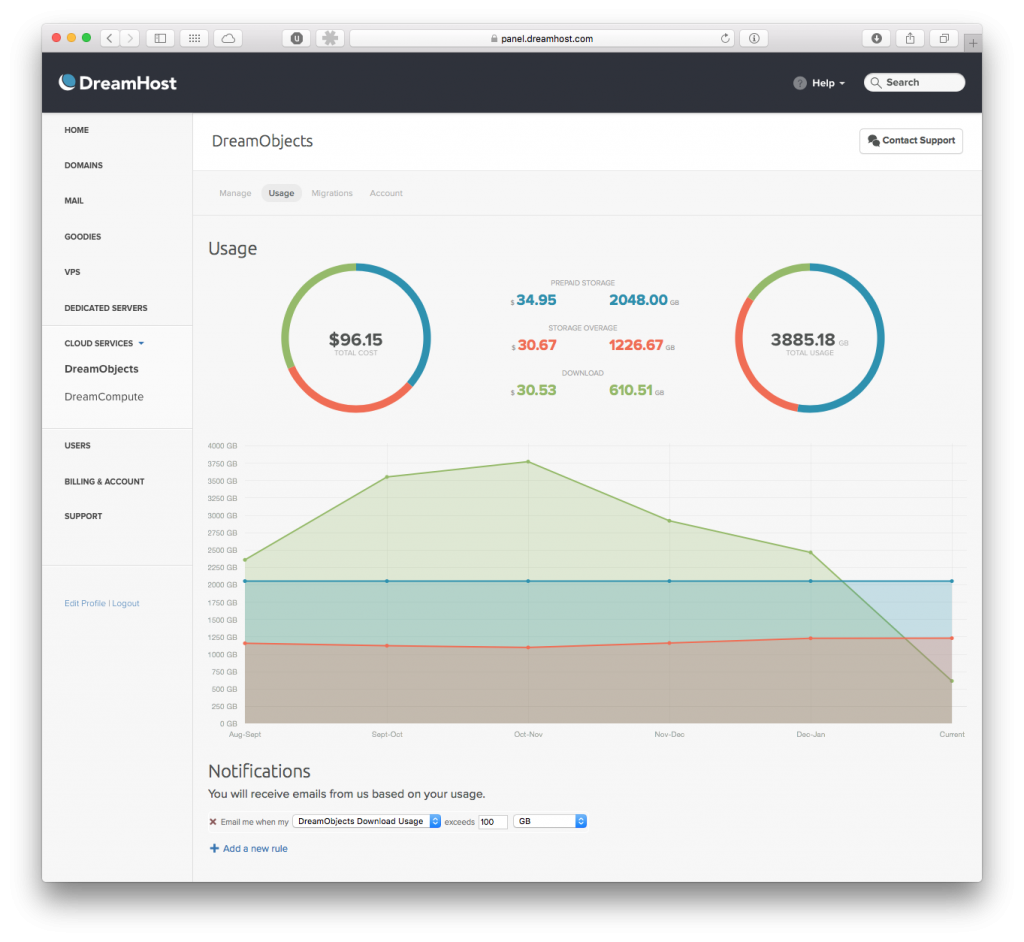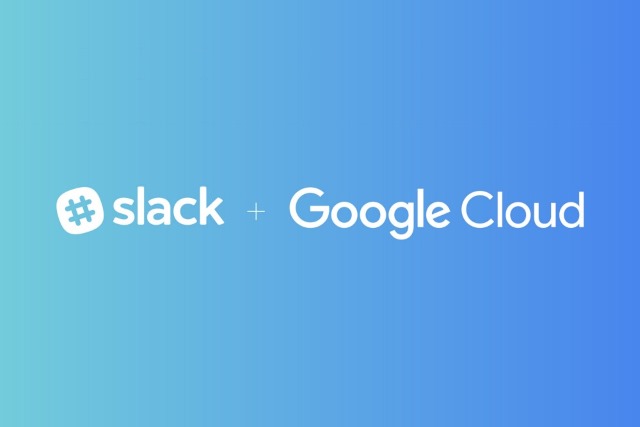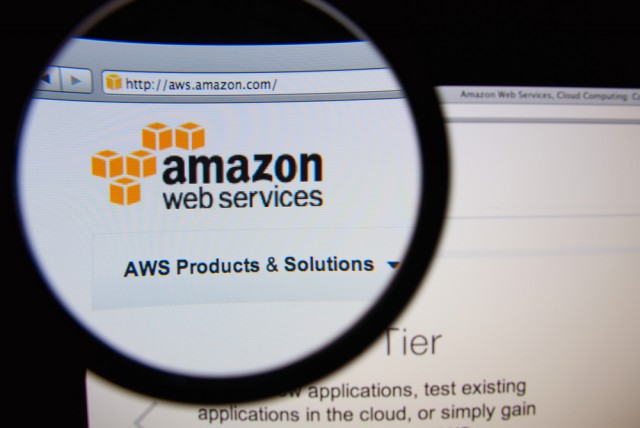
DreamObjects improves enterprise cloud storage
The cloud is becoming the first place many businesses turn to when looking to increase their storage capacity.
Web hosting and cloud services company DreamHost is looking to give enterprises more scalable, reliable, and high performing cloud storage with the launch of its latest DreamObjects storage hosting service.

Google cozies up with Slack for tighter integration
Faced with competition from the likes of Microsoft Teams, Slack is strengthening its partnership with Google to bring greater cloud integration to users.
The beloved communication tool is teaming up with Google Cloud to improve Google Drive support, but there's also support for bots in the form of Drive Bot. Security and sharing is also in line for improvements, and the recently-announced Team Drives from Google will also be supported.

New platform simplifies integration of business systems
Businesses increasingly rely on a range of systems. But getting those systems to work smoothly together can prove to be something of a challenge.
Integration specialist Jitterbit is announcing what it calls a Citizen Integrator, a cloud based integration platform.

New platform gives businesses control of SaaS
The switch to as-a-service models for delivering software gives organizations a wide range of providers to choose from, but it can lead to a proliferation of different solutions and a challenge for management.
Cloud management specialist BetterCloud is launching a new unified software-as-a-service (SaaS) management platform to give IT departments powerful automation and governance capabilities.

Amazon launches DDoS protection service AWS Shield
Following the massive attack that took down the servers of the DNS service provider Dyn and a number of high profile websites including Netflix, Twitter, Spotify and Reddit last month, Amazon Web Services (AWS) has announced a new technology to protect sites against distributed denial of service (DDoS) attacks.
The new tool, which is called AWS Shield, was announced at the company's re:Invent developer event in Las Vegas. Amazon's own site was affected by the attack on Dyn and the company has now decided to launch its own DDoS protection service to ensure that its site and those that use AWS are able to withstand future attacks.

SUSE buys HPE's Cloud Foundry and OpenStack assets
SUSE has announced that it will acquire OpenStack and Cloud Foundry from Hewlett Packard Enterprise (HPE) in a move to accelerate the company's growth and entry into new markets.
The German company will integrate the assets of OpenStack infrastructure-as-a-service (IaaS) into its own SUSE OpenStack Cloud. SUSE will use Cloud Foundry and its platform-as-a-service (PaaS) assets to help it bring a certified, enterprise-ready solution to market for all of the customers and partners currently using its ecosystem.

Seagate Duet is a 1TB USB HDD with automatic Amazon Drive cloud backup capability
When it comes to backing up a computer, I am a big proponent of the cloud. While local backups should also be part of your plan, redundancy is key. If there is ever a disaster, such as a flood or fire, you will be very glad for the cloud backup. If the cloud storage company goes out of business, you will be thankful for the local copy. In other words, don't just rely on one method.
Seagate has an interesting new product, called "Duet", that it developed with Amazon, and it aims to create a positive redundant backup experience. The hardware itself is rather basic -- a 1TB 2.5-inch portable USB (Type-A) hard disk drive. The magic is in the software (Windows and Mac only), however, as it creates automatic cloud backups of the HDD contents to Amazon Drive in the cloud.

AWS could become Amazon's biggest business
Holiday sales from Black Friday and Cyber Monday could very well help Amazon hit its target of $134 billion in annual sales, and Amazon Web Services (AWS) could make up for $12 billion of it
The company began offering web services to its customers over 10 years ago and in recent years this division has grown from a small to significant portion of the online retailer's business. AWS currently operates in 38 availability zones within 14 geographic locations and large companies such as Netflix, Adobe and Spotify have turned to the company for hosting and operating their websites and services.

Sentiment analysis helps sales teams measure customer reaction
One of the problems sales teams face is knowing how their pitches, presentations and marketing materials are perceived by the customer.
Cloud-based sales and content management platform Pitcher is hoping to offer teams better insight with its newly patented Sentiment Analysis Module (SAM).

The cloud can be a driving force for your startup
Amazon Web Services (AWS) turned ten earlier this year and posted some pretty impressive figures to go with it (which have continued to impress in subsequent quarters). The public cloud provider revealed it is on course to generate more than $10bn in 2016, which highlights the success of the public cloud.
Organizations from all over the world are tapping into this success, but could it also be the driving force behind successful start-ups? If so, what can enterprises learn from start-ups flourishing in the cloud?

Scality improves security for enterprise cloud
As organizations store more of their information in the cloud increased focus is placed on keeping it secure from breaches and other threats.
Cloud storage specialist Scality is launching a new version of its RING software defined storage technology to provide extended security features and a trusted, compliant and secure storage infrastructure.

HPE, IBM and T-Systems compete for Cern cloud platform contract
Cern is currently searching for a potential supplier for its €5.3 million Helix Nebula hybrid cloud platform and T-Systems, IBM and Hewlett Packard Enterprise (HPE) have made it to the last round.
Initially, 28 different firms from 12 countries submitted bids for the lucrative contract to develop a hybrid cloud platform that will be built upon commercial cloud services, publicly funded infrastructures and each firm's own IT resources.
Cern has narrowed down its list of bids down to the four firms based on the design ideas they have submitted for the project. The scientific organisation will eliminate one more firm and the remaining three will be required to build a prototype platform.

Why cloud? Justification for non-techies
Cloud computing is all the rage today, to the point that it feels like you can’t fill out your "buzzword bingo" card at any meeting without using the phrase. There are all kinds of technical reasons why cloud has the market momentum it does, but what if you aren’t swayed by such things? If you’ve seen technology trends come and go, you need non-technical justification for moving your business in any direction, and cloud computing is no different for you.
So, what is the main justification for business owners to use cloud that doesn’t involve a lot of technical jargon? Let’s get to the bottom line and talk ROI and payback instead.

Google buys Qwiklabs
Google has announced that it has acquired Qwiklabs in order to train developers how to use its cloud services.
Qwiklabs is designed as a way to give developers and IT professionals a hands-on learning platform from which they can gain experience with cloud platforms and the way in which they operate. The company launched in 2012 and its primary focus is teaching its customers how to use the Amazon Web Services (AWS) cloud.

Druva launches pay-as-you go disaster recovery on AWS
Disaster recovery is something that all businesses need but few like to contemplate. It's tempting therefore to think that storing data in the cloud makes the problem go away, but of course it doesn't.
You need to look after your data wherever it's stored and to help AWS users with this, data protection specialist Druva is launching its Phoenix cloud-native solution for backup, archive and disaster recovery on the AWS Marketplace.
